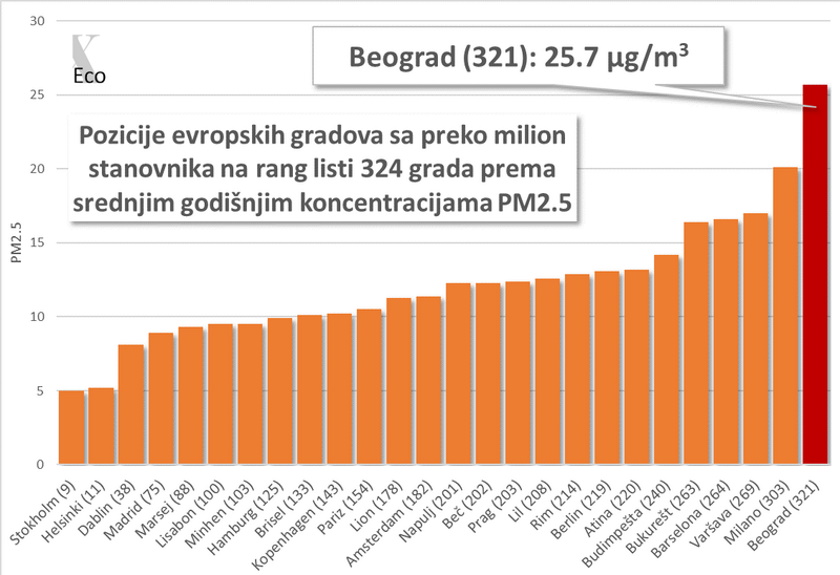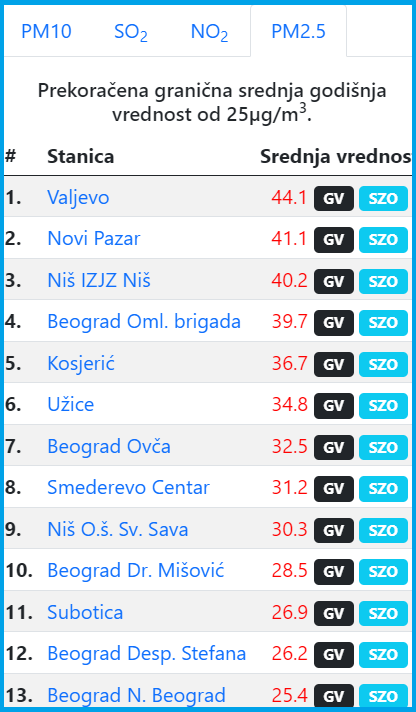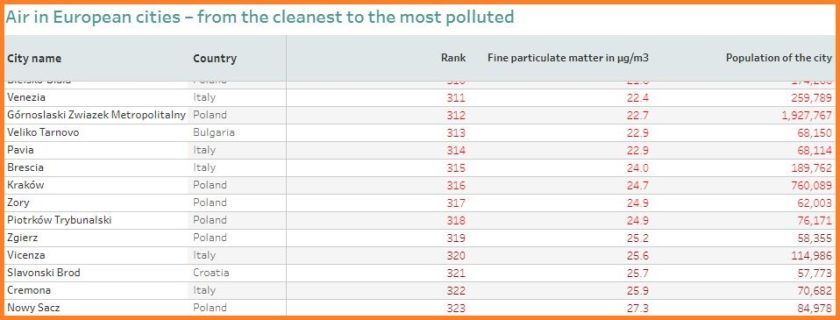
Photo: Pixabay/Rade Dr.
If Serbia were an EU member, Belgrade would be among the worst-ranked cities (321st out of 323) by concentrations of PM2.5, the biggest air polluter and the most harmful one to human health. The EU’s most-polluted list is dominated by Polish and Italian cities, but it also includes those in Croatia, Romania, and Slovenia.
The National Ecological Association (NEA) has warned that the International Day of Clean Air finds Serbian citizens exposed to horrific pollution levels in all segments of the environment. Not even 7,500 premature deaths in Serbia due to excessive air pollution, according to NEA, is enough to make state institutions address the problem and protect the health of Serbian citizens, who held a protest over the issue a few days ago.
Only two cities – Novy Sacz in Poland and Cremona in Italy – are worse-ranked than Belgrade by the annual mean concentration of PM2.5 (particulate matter of less than 2.5 microns in diameter), while Croatia’s Slavonski Brod has the same level as the Serbian capital, of 25.7 µg/m3. Some Serbian cities are even more polluted than Belgrade – including Valjevo, Novi Pazar, Niš, Kosjerić, Užice, Smederevo, and Subotica.
Belgrade is the most polluted among European cities with over 1 million people
NEA has conducted an analysis of PM2.5 pollution in the EU and Serbia in 2019 and 2020 based on official rankings of 323 cities in the EU, published by the European Environment Agency (EEA), and data from the Serbian Environmental Protection Agency (SEPA).
Belgrade’s performance is even worse when only cities with a population of over 1 million are observed, ranking No.1 by PM2.5 pollution.

Belgrade exceeds limit value under air quality decree
Dejan Lekić, a member of NEA’s expert council and former assistant director at SEPA, has told Balkan Green Energy News that Belgrade’s PM2.5 annual mean concentration of 25.7 µg/m3 was determined in SEPA’s latest published official report, for 2019. Unfortunately, an official report for 2020 has not yet been published, but it would not have made the situation better, on the contrary, the result would have been even worse judging by air quality monitoring app xEcoVazduh, devised by Lekić himself.

According to him, the mean value of 25.7 µg/m3 constitutes a breach of the limit values allowed in Serbia, given that the government’s decree on air quality requirements and monitoring sets the limit value for Belgrade, as well as other cities in Serbia, at 25 µg/m3.
It’s a disgrace that we know what’s going on and yet we’re doing nothing about it

Asked to comment on Belgrade’s ranking among European cities, Lekić attributed it to “decades of lack of investment, negligence, indifference, ignorance, and cheap marketing.”
Compared with EU countries, according to him, Serbia is at the very bottom. However, it’s no surprise that the country is the worst by economic criteria, but it is a disgrace that Serbia is also at the bottom by the state of the environment. “It’s an even bigger disgrace that that we have known for years what’s going on and yet we’re doing nothing about it,” he said.
Attempts to dress up the facts by endlessly repeating falsehoods are bad for everyone, especially citizens
Lekić stressed that the latest analysis shows that “offhand and subjective assessments by officials, as well as attempts to dress up the facts by endlessly repeating falsehoods,” are bad for everyone, especially citizens.


















Be the first one to comment on this article.